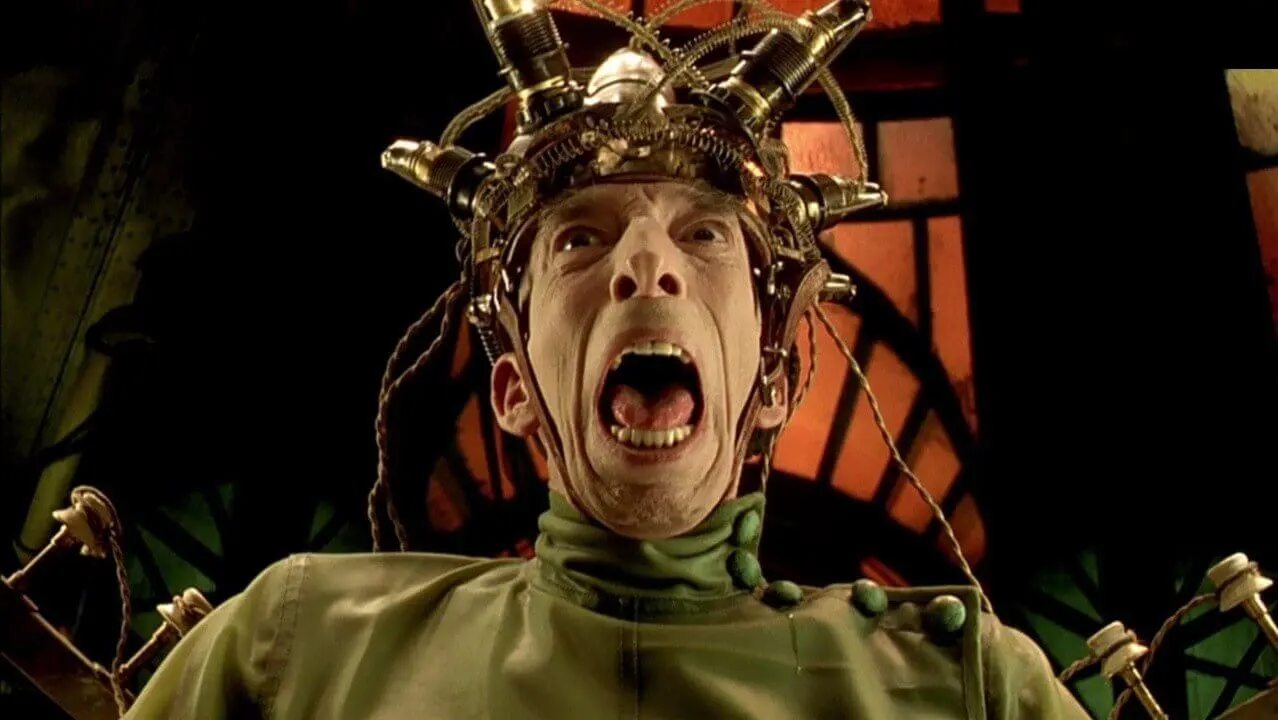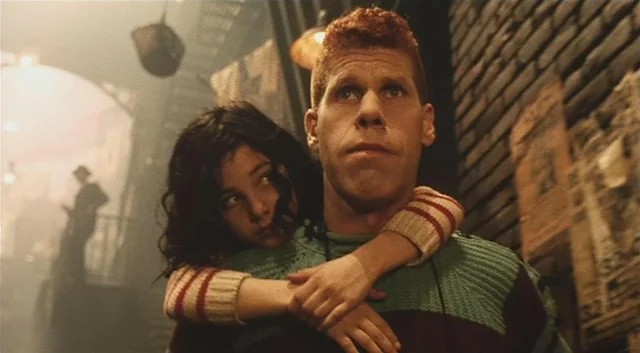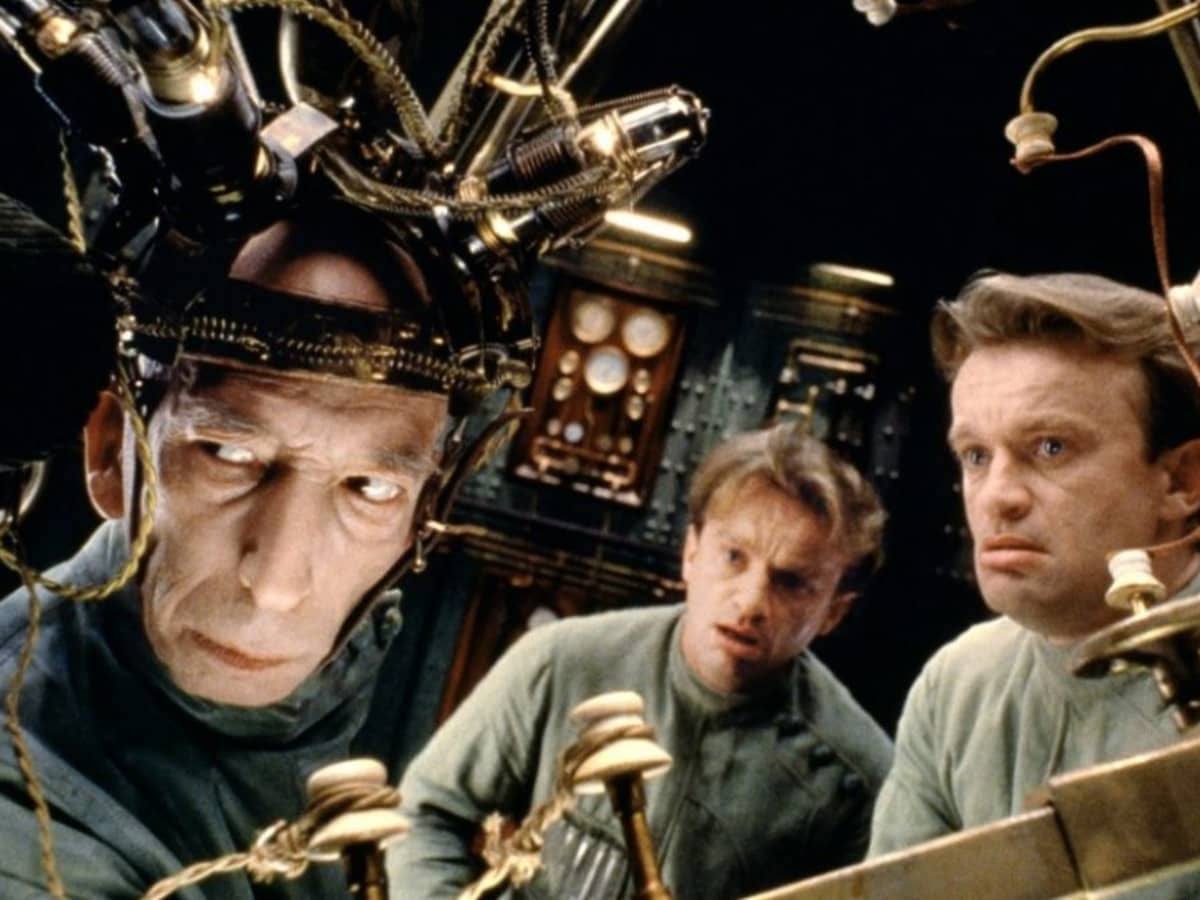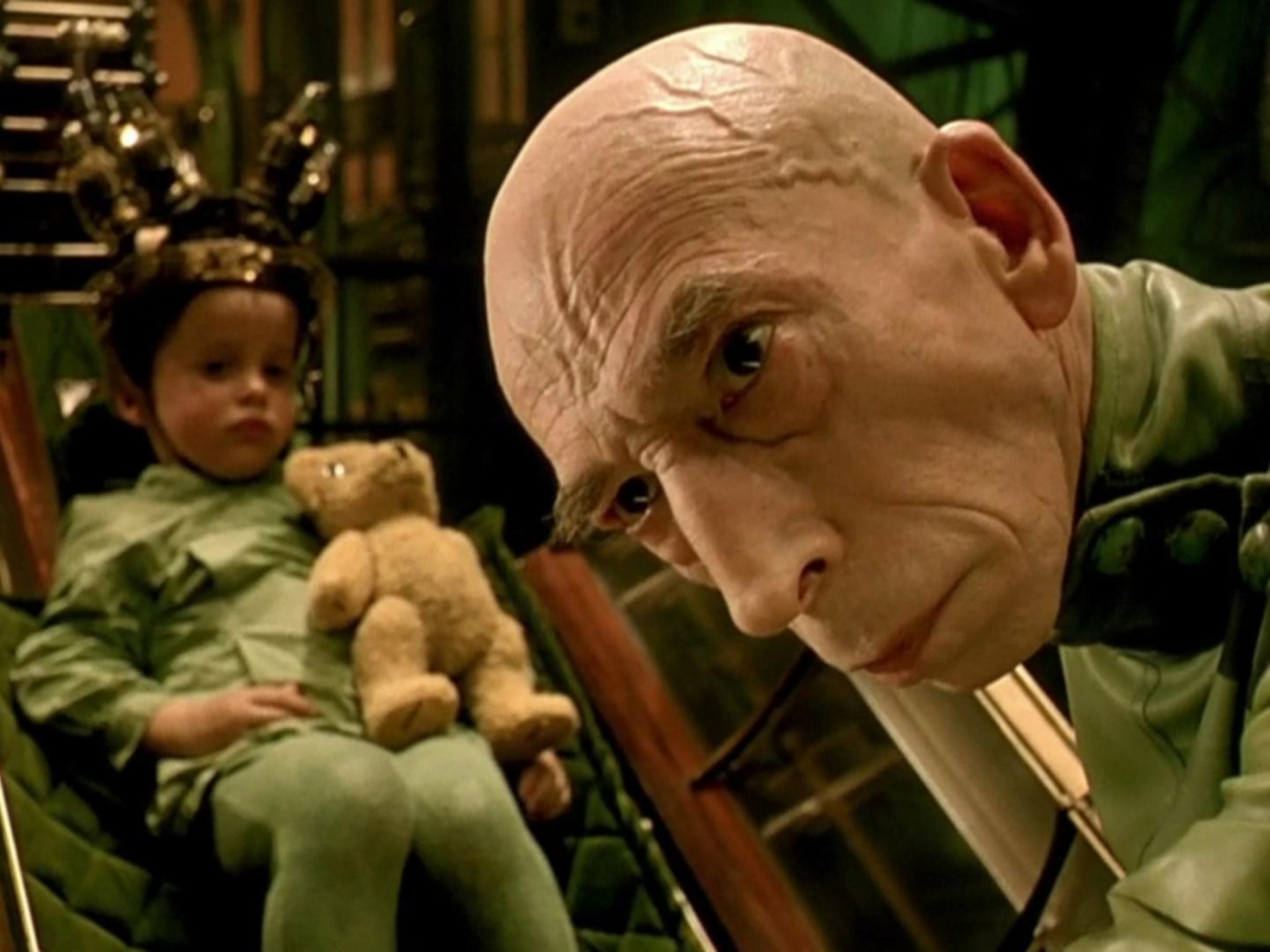The City of Lost Children (1995)

The City of Lost Children (La Cité des Enfants Perdus) is a visually stunning and thought-provoking science fiction film directed by Marc Caro and Jean-Pierre Jeunet, released in 1995. Known for their work on Amélie (2001), Jeunet and Caro collaborated on this dark and atmospheric film, which explores themes of memory, childhood, and the loss of innocence. The film features an international cast, including Ron Perlman in a standout role, and is set in a surreal, dystopian world that blends elements of steampunk, fantasy, and horror. With its distinct visual style, intricate narrative, and complex characters, The City of Lost Children stands out as a unique and ambitious piece of cinema.
The film is set in a bleak and strange world, where an enigmatic scientist named Krank (played by Daniel Emilfork) kidnaps children in order to steal their dreams. Krank is an aging, impotent man, obsessed with reversing his aging process and reclaiming the vitality and power of his youth. He lives in an isolated, industrial city on the edge of the ocean, a city full of decaying machinery, fog, and a sense of perpetual night. Krank’s sinister goal is to steal the dreams of the children he kidnaps so that he can live forever, but in the process, he creates a void in their souls, leaving them as empty, lifeless shells.
The film follows a strong and silent man named One (played by Ron Perlman), a former circus strongman, as he embarks on a quest to find his younger brother, who has been abducted by Krank. One is an unlikely hero, possessing little more than brute strength and an unwavering determination. He teams up with a young girl named Miette (played by Judith Vittet), who is an orphaned pickpocket. Miette is smart, resourceful, and has a strong sense of morality, but like many of the characters in the film, she is also a product of the grim, dystopian world she inhabits.
As One and Miette search for Krank’s lair, they encounter a series of strange and unsettling characters, including a group of clones created by Krank to serve him and assist in his experiments. As the two unlikely companions venture deeper into the world of Krank, they uncover dark secrets about the scientist’s past and the horrific ways in which he exploits children. The film explores themes of memory and identity, as One’s quest for his brother leads him to confront the trauma of his own past and the nature of the dreams that are stolen from the children.
One of the most striking aspects of The City of Lost Children is its exceptional visual design. The film’s aesthetic is both dreamlike and nightmarish, characterized by its dark, atmospheric settings, oddball character designs, and a color palette that combines dark blues, greens, and browns with surreal bursts of color. The production design, by Aline Bonetto, creates a world that is both fantastical and grim, blending elements of a dystopian future with a steampunk sensibility. The streets of the city are cluttered with rusting machinery, gears, and strange contraptions, while the interiors of Krank’s lair resemble a twisted combination of a mad scientist’s laboratory and a children’s playground.
Caro and Jeunet use a variety of cinematic techniques to enhance the mood of the film, including elaborate set pieces, close-ups, and wide-angle shots that immerse the viewer in the world of the story. The cinematography, by Darius Khondji, is key to the film’s overall sense of mystery and unease. The camera often lingers on eerie, dreamlike sequences, blurring the line between reality and nightmare. The result is a film that feels like a dark fairy tale, with a sense of both wonder and dread.
The use of practical effects and elaborate sets further strengthens the film’s unique visual appeal. Unlike many modern science fiction films that rely heavily on CGI, The City of Lost Children creates its world through physical, tangible elements, such as intricate sets, miniatures, and mechanical devices. This tactile quality makes the film feel more grounded in reality, despite its fantastical elements. The visual richness and attention to detail create a world that is simultaneously familiar and completely alien, drawing viewers into a haunting and immersive experience.
At its core, The City of Lost Children is about memory, childhood, and the search for meaning in a world that feels increasingly fragmented and uncertain. The children in the film are not only literal victims of kidnapping but also symbolic representations of lost innocence, their dreams being stolen in an attempt to extend the life of an old man. The idea of “dreams” is central to the narrative, serving as both a literal plot device and a metaphor for the intangible, precious aspects of life—hope, imagination, and the sense of wonder that children possess.
The film also explores the concept of identity and the importance of memory in shaping who we are. Krank’s attempts to steal the dreams of the children and prolong his life highlight his inability to accept aging and the inevitable loss of self that comes with it. He is trapped in a cycle of obsession with youth, but in his pursuit of immortality, he loses the very essence of what makes him human. His desire to “steal” life from children ultimately renders him a hollow figure, devoid of the joy and vitality that comes with truly living.

Miette’s role in the story, as both a guide and a moral compass for One, reflects the theme of innocence and purity in contrast to the cynicism of the adult world. She is a product of this corrupt society, but unlike the other adults around her, she retains her compassion and sense of empathy. Miette’s intelligence and her desire to help One rescue his brother add emotional depth to the film, as she symbolizes the resilience of the human spirit even in the face of a harsh and oppressive world.
The film also delves into the theme of loss—the loss of children, the loss of dreams, and the loss of self. One’s journey is not just about rescuing his brother but also about coming to terms with his own past and the ways in which memory and trauma shape who we become. The oppressive, industrial environment of the city serves as a constant reminder of this loss, with its decaying buildings, fog-choked streets, and mechanical monstrosities.
Ron Perlman delivers a powerful performance as One, the strongman with a heart of gold. While One is physically imposing and often silent, Perlman brings depth to the character, portraying his internal struggles and emotional journey with subtlety and grace. His portrayal of a man who must face his own vulnerability in order to protect the ones he loves is both touching and heroic. Perlman’s expressive face conveys a wide range of emotions, from sorrow and fear to determination and tenderness.
Judith Vittet’s portrayal of Miette is equally compelling. She plays a young girl with an old soul, wise beyond her years, yet still holding on to the hope of a better world. Miette is the emotional center of the film, offering a counterbalance to One’s strength and stoicism. Together, the two form an unlikely but endearing partnership, navigating the dark and dangerous world around them.
Daniel Emilfork’s portrayal of Krank is chilling and memorable. As the antagonist, he embodies both the physical and psychological decay of his character. Krank is both a tragic figure and a monstrous one, and Emilfork’s performance brings this duality to life with unsettling intensity.
The City of Lost Children is a remarkable film that pushes the boundaries of science fiction and fantasy. With its unique visual style, complex themes, and memorable performances, the film stands as a testament to the creativity and vision of Marc Caro and Jean-Pierre Jeunet. It is a dark, fantastical tale that examines the nature of memory, the loss of innocence, and the lengths to which people will go to preserve their sense of self. Although it was not a commercial success upon its initial release, The City of Lost Children has since gained a cult following and remains a beloved and influential film in the science fiction genre. Its haunting imagery and thought-provoking narrative continue to resonate with viewers, making it a timeless classic.














